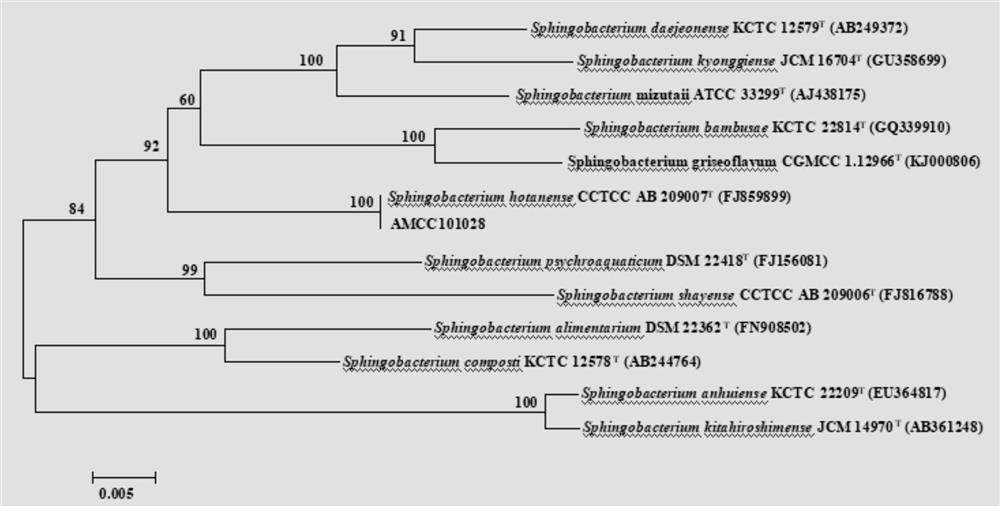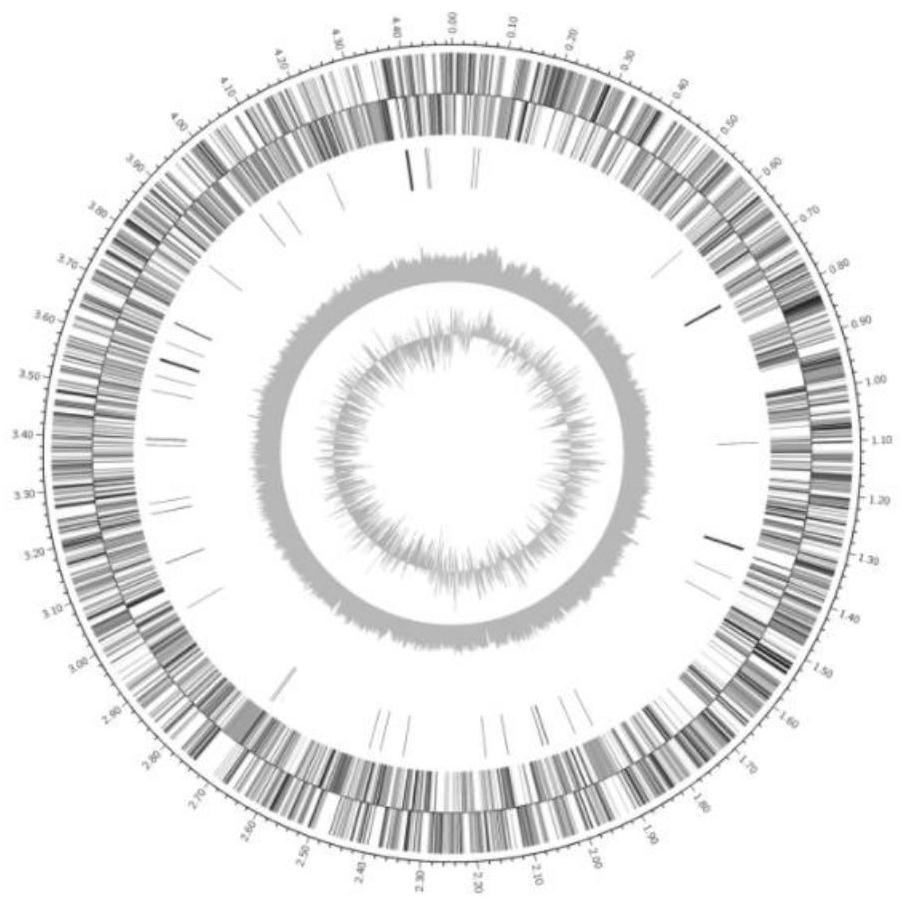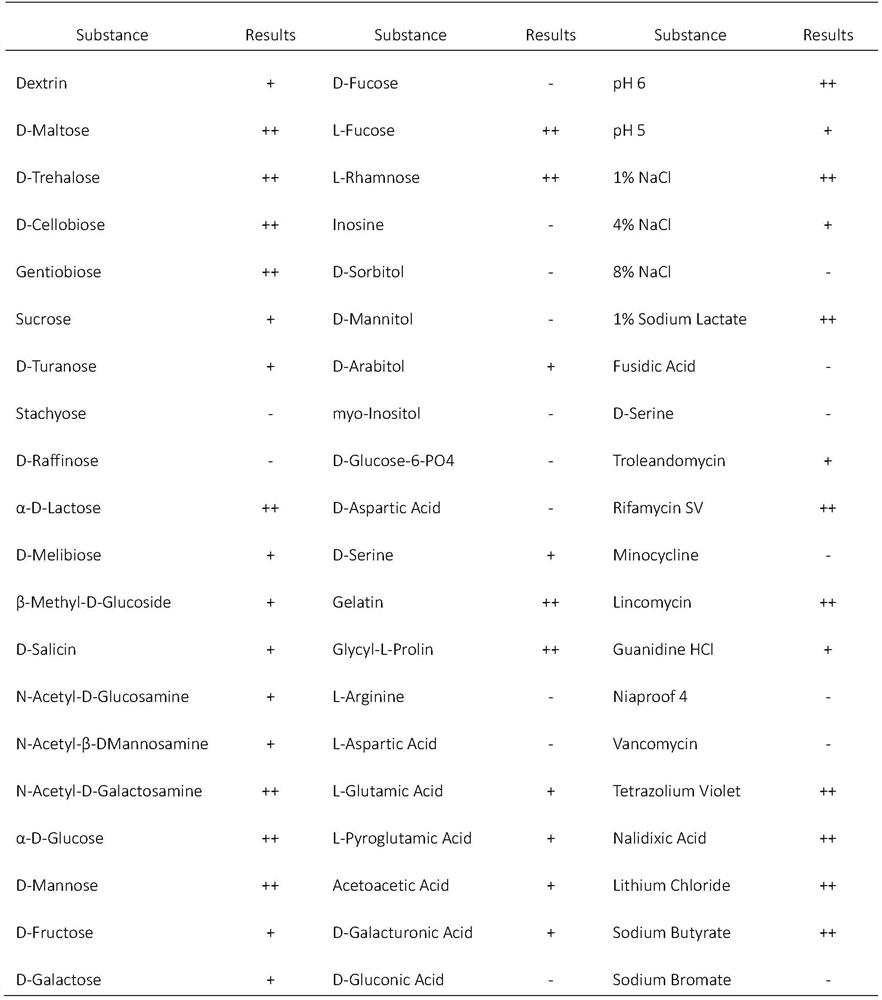Application of a sphingobacterium hotanense in the control of parasitic nematodes
A nematode and microorganism technology, applied in the field of microorganisms, can solve the problems of limited application of biocontrol preparations, biocontrol bacterial strain selection, lag in production technology and industrial production research, and achieve the effect of inhibiting root-knot nematodes
- Summary
- Abstract
- Description
- Claims
- Application Information
AI Technical Summary
Problems solved by technology
Method used
Image
Examples
Embodiment 1
[0036] Isolation, Identification and Preservation of AMCC101218 Strain
[0037] (1) Isolation and screening process of AMCC101218 strain
[0038] An insecticidal strain was screened from plant rhizosphere soil, numbered AMCC101218.
[0039] (2) Identification of AMCC101218 strain
[0040] ①Main biological characteristics of AMCC101218 strain: the colony is round in shape with irregular edges and opaque, the color of the colony is yellow, and Gram staining is negative.
[0041] ②The main physiological and biochemical characteristics of the AMCC101218 strain were determined by BIOLOG 96 microwell plate, and the results of the physiological and biochemical characteristics of AMCC101218 are shown in Table 1:
[0042] Table 1
[0043]
[0044] ③Molecular biological characteristics of AMCC101218 strain
[0045] The molecular biology identification test method of AMCC101218 strain is carried out according to "6.5" in NY / T 1736-2009; MEGA6.0 is used to build the tree, and the r...
Embodiment 2
[0049] Determination of nematode killing ability of AMCC101218 strain
[0050] Use an inoculation loop to pick the AMCC101218 strain preserved on the slant and streak it on the LB (0.5% yeast extract, 1% peptone, 1% sodium chloride, 1.6% agar, pH7.0, 121 ° C, 20min autoclaving) plate for activation; The activated strains were inoculated in BPY culture solution, cultured on a shaker at 200 rpm at 37°C for 48 hours, centrifuged at 12000 rpm for 10 minutes, and the supernatant was collected.
[0051] The BPY fermentation medium includes the following components per liter: beef extract 5.0g, peptone 10.0g, yeast extract 5.0g, glucose 5.0g, NaCl 5.0g, balance water, pH 7.0.
[0052] Experiment on killing root-knot nematode incognita / root-knot nematode elephant ear:
[0053] Wash the picked root-knot nematode / meloidogyne elegans oocysts, put them in 0.5% sodium hypochlorite solution for disinfection for 3 minutes, rinse them with sterile water for 3 times, pick the oocysts and pl...
Embodiment 3
[0060] Preparation of AMCC101218 bacterial agent
[0061] (1) Strain activation: the AMCC101218 strain was streak-inoculated on an LB solid medium plate, and cultured at 37° C. for 24 hours.
[0062] (2) Seed solution preparation: the activated AMCC101218 was inoculated into a Erlenmeyer flask filled with LB liquid medium, and cultured in a constant temperature shaker at 37° C. and 180 rpm for 18 hours.
[0063] (3) Seed liquid expansion cultivation: Inoculate the seed liquid in step (2) into the seed tank liquid medium with an inoculation amount of 8%, the expansion medium is LB liquid medium, and cultivate at 37° C., 200 rpm for 8 hours.
[0064] (4) Fermentation culture: the seed liquid that expands culture in the step (3) is inoculated to BPY fermentation medium with the inoculum size of 8%, in 37 ℃, 200rpm cultivates 48h, obtains AMCC101218 liquid bacterial agent, viable count 1.7 * 10 8 CFU / mL, filled into 1L plastic bottle with cap.
[0065] The BPY fermentation mediu...
PUM
 Login to View More
Login to View More Abstract
Description
Claims
Application Information
 Login to View More
Login to View More - R&D
- Intellectual Property
- Life Sciences
- Materials
- Tech Scout
- Unparalleled Data Quality
- Higher Quality Content
- 60% Fewer Hallucinations
Browse by: Latest US Patents, China's latest patents, Technical Efficacy Thesaurus, Application Domain, Technology Topic, Popular Technical Reports.
© 2025 PatSnap. All rights reserved.Legal|Privacy policy|Modern Slavery Act Transparency Statement|Sitemap|About US| Contact US: help@patsnap.com



